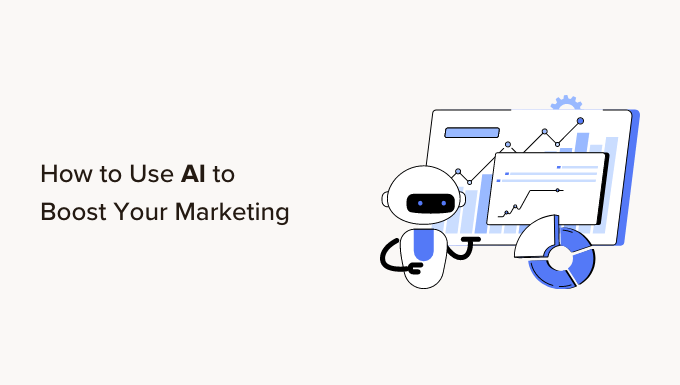
How to Boost Marketing Efforts in a Small Service Business Using AI Videos
In today’s fast-paced digital landscape, audio-visual content has emerged as a potent force in marketing campaigns, surpassing the effectiveness of traditional content formats. Unlike static images or texts, video content engages a larger audience as it appeals to multiple senses simultaneously, making it inherently more impactful and memorable.
With the rise of social media platforms and streaming services, consumers are constantly inundated with content, making it increasingly challenging for businesses to capture and retain attention. Audio-visual content, however, offers a more dynamic and immersive experience that helps captivate their attention and hold their interest for longer periods.
Moreover, video content has a greater scope of storytelling, allowing brands to convey their messages in a more compelling manner that resonates with the audience. As a result, it enables businesses to forge a deeper connection with their target audience, driving higher engagement, brand recall, and finally, conversions.
Considering the potential of video content, it is regarded as the most powerful component for marketing campaigns. However, making engaging videos is a skill that not many people possess. For a small business with limited resources, it can even be a greater problem, as hiring a professional to make videos for them will incur significant costs. Additionally, tools like Live Caption AI can significantly improve content creation efficiency. By quickly capturing thoughts for a script or transcribing spoken words in real-time, Live Caption AI can streamline the process of generating accurate and engaging subtitles, making videos more accessible and inclusive. This functionality is particularly valuable for businesses aiming to cater to diverse audiences, including those with hearing impairments, thus broadening their reach and impact.
With the introduction of AI-powered tools, this is no longer a challenge. Using AI videos, small service businesses can create promotional videos and use them for their marketing campaigns, thus leveraging the advantages of audio-visual content at no extra cost. For a list of AI video tools, visit SEOFAI.
If this sounds interesting to you, you may benefit from reading this article further. Here, you will find all about AI video-making tools and how to use them for marketing efforts.
What is AI Video?
An AI video is a type of digital content created using artificial intelligence. In this process, the AI technology automates and enhances various aspects of the video-making process. Unlike traditional video creation methods that solely rely on manual labor, AI video tools utilize algorithms and machine learning techniques to generate, edit, and customize audio-visual content automatically. Essentially, it serves as a digital assistant, helping users with tasks such as scene generation, text-to-speech conversion, and image recognition, among others.
With an AI video tool, users will not even have to shoot a video to create content. All they must do is input specific commands or provide references describing the type of video content they want. The AI tool will automatically analyze the input data, such as text, images, or video clips, and generate a cohesive video output. For example, if you input a script or text describing a specific scenario, the AI video tool can generate corresponding visuals, select appropriate background music, and even synthesize voice overs to bring the content to life.
Furthermore, AI can efficiently analyze user preferences and engagement data to optimize video content for maximum impact. This will ensure that the final product becomes more engaging and resonates with the target audience.
Evidently, AI video tools streamline the video-making process, allowing small businesses to produce high-quality audio-visual content efficiently and cost-effectively without even extensive technical expertise.
How to Boost Marketing Campaigns with AI Videos?
Now that you have a fair idea of what AI videos are and how to generate such content with digital tools, let’s try to understand how small businesses can implement them in their marketing efforts:
Step 1: Define Your Objectives and Audience
Before you start generating AI videos, it is crucial to clearly define your marketing objectives and your target audience. Ask yourself what you aim to achieve with this content—whether it is generating leads, increasing brand awareness, or driving conversions. Defining this scope will allow you to craft a concise message and enable the AI video tool to generate more cohesive content.
Further, define your target audience as well. An effective marketing video is one that resonates with the viewers. To achieve that, you must clearly identify the people you want it to resonate with. Therefore, it is critical that you define your target audience’s demographics, preferences, and pain points. This information will guide your content and messaging for your AI videos, ensuring they effectively communicate your value proposition.
Step 2: Develop a Marketing Strategy
Once you have identified your target audience and marketing objectives, utilize them to develop an appropriate marketing strategy for your video content. Determine how and where you are going to publish them. This is crucial to optimizing engagement. Small service businesses can also leverage field service management software systems in this regard. This cutting-edge software system provides in-depth analytics on customers’ preferences and demands, allowing users to craft compelling messages and value propositions for their videos. Bear in mind, that your marketing strategy should always align with your wider business and brand strategy. Additionally, the software can also capture valuable data on service interactions, seasonal requirements, and customer feedback, which can be utilized to tailor marketing campaigns and promotions to specific target audiences.
Step 3: Choose the Right Video Generation Platform
Choosing the right video creation platform is absolutely critical for producing high-quality video content. Look for platforms that offer an intuitive interface, advanced AI-powered features such as automated scene generation and voiceover synthesis, and a wide range of customizable video templates. A great choice in this regard is Invideo AI. enter any topic, and this efficient AI video tool will generate a script, create scenes, add voice overs, and customize the final video according to your demands. It also allows you to add instructions, such as the target audience and chosen platform to publish the video, and create content accordingly.
Step 4: Craft Engaging Audio-Visual Content
Once you pick your AI video tool, it is time to figure out concise instructions to make the video. Keep your script or message concise, avoid ambiguous messages, and take your target audience into consideration while entering the prompts. Focus on delivering your message quickly and effectively. Use attention-grabbing visuals, appropriate background music, immersive storytelling, and clear call-to-actions to engage your audience. Most importantly, ensure your video content adds value and resonates with your target audience.
Step 5: Optimize Your Content for Google Search and Social Media
To make your marketing campaign successful, it is not enough to just create videos. You will have to make it reach as many viewers as you can. To do this, just make the biggest use of the powerful ChatGPT-4o to optimize your content for search engines and social media platforms. Incorporate SEO elements like relevant keywords in your video title, descriptions, and alt images. For social media, add appropriate hashtags to improve their visibility. Additionally, tailor your content for specific social media channels, optimizing captions, thumbnails, and aspect ratios for each platform. Don’t forget to encourage viewers to like, comment, and share. Try to create interactive content to increase engagement and broaden your reach organically. Looking to drive growth and engagement? Iris is a digital marketing agency in Vietnam. They craft cutting-edge digital solutions tailored to your business needs.
In Conclusion
Harnessing the power of AI videos can significantly boost your marketing efforts. It is a cost-effective and efficient way to create engaging marketing content. With limited resources and manpower, small service businesses can leverage AI-powered video tools to produce professional-level audio-visual content quickly, without the need for expensive equipment or extensive technical expertise, increasing the chance of connecting with potential customers and driving conversions.
Along with AI videos, leveraging field service management software solutions can also be a great way to boost marketing efforts. This software can play a pivotal role in developing an efficient marketing strategy for small service businesses by optimizing operations and improving customer engagement.
By efficiently managing tasks, such as technician scheduling and dispatch, time-tracking, monitoring, and resource allocation, it ensures enhanced service quality and customer satisfaction, thus helping in crafting an improved value proposition for the marketing campaign. Moreover, by enhancing service quality and improving customer response time, it helps service businesses build a reputation for quality and reliability, ultimately boosting brand loyalty and attracting new customers.



